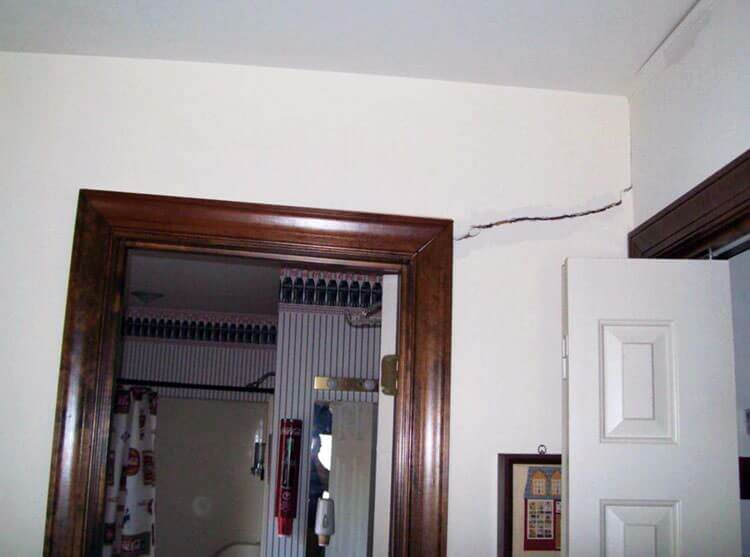House Structure Issues – Signs of Structural Problems
Last blog I talked about roofing materials and the different traits they have.
Another important thing when buying houses is the structure. Whenever I ask people about their main concerns when it comes to an inspection, the two that always come up is roof and structure.
Structure
When people think of structure problems, they typically think of falling buildings. With active settlement it is very difficult to detect. Even the best experts cannot stare at a building and declare it is currently settling. The only way to detect something like that is to make a mark, and then track it.
And with active settlement, the repairs are quite expensive. Those expensive things could include underpinning, which is adding extra support to under the foundation.
So how do we detect settlement if we can’t eyeball it? Well the best we can do is detect the effect of settlement. While it wouldn’t tell us if its active, it can give us suspicions. We do that by looking at how a property operates.
When a foundation moves, the wood frame on top of the building move with it. The effect that is throwing the wood frame out of alignment. This would mean doors stop working, windows stop sliding properly, etc. If you have suspicions of settlement, and many of the doors are not closing properly, yes you could have settlement.
There are numerous things that people think may be signs of major settlement, but actually aren’t a worry.
First and foremost, before I go into some of these small signs, it’s important to understand and be aware that all buildings do settle a little bit – especially newer buildings. As a result, typically there will always be some small signs that don’t have much more consequence beyond signs they make.
So here are some examples:
Foundation Wall Cracks
The number one thing is cracks in the foundation wall. It is very common for cracks to form as part of the curing process of concrete. Typically they can be hairline cracks, but occasionally they get bigger.
When the cracks get bigger, yes they are a sign of some settlement. But it doesn’t necessary mean the building will shift more than it has. The main thing to be aware of is water moving through that crack.
If you are in a building that is slab on grade, in other words, doesn’t have a basement or crawlspace, then there is very little to worry about.
If you do have a basement or a crawlspace, if the crack is large enough, yes here is danger of water getting in and damaging wood framing. This water typically can be controlled from the exterior though. If you have good drainage around your house, then the chances are minimal. If you have bad drainage, where the angle of the grade drives water into the property, then yes it should be taken care of.

Cracks on interior paint
The second most common thing that people ask me is cracks on the interior, such as the paint.
These are very common, and can occur for two reasons. One is a result of the small amounts of settlement in a building. When this small amount occurs, small cracks may form along weak areas of the drywall. These areas are the seams where they mudded two pieces of drywall together. They are cosmetic, and can be repaired.
The second reason is increased humidity in the building which may cause the tape lines to fall, cracking along the edges of rooms. These too, are very cosmetic, and can be repaired.
These cracks typically are very straight. Cracks on interior that would usually form a concern usually spider out from an area, which would mean pressure on a particular area.
Next Time
Next blog I will speak on water damage, and common ways it can occur.
—
If you’re in the market for a home, or are just getting started on the process, then give us a call or text at 604-319-0200 or email [email protected] to start a conversation. We’re here to help.



